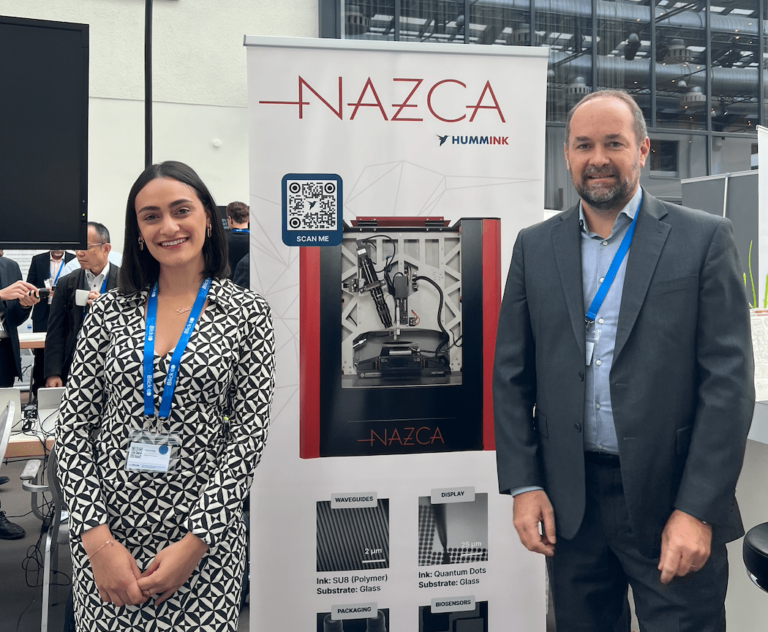What is the printing resolution?
The printing resolution of our technology is at the micron and sub-micron scale, ranging from 50 micrometers (um) to as fine as 100 nanometers (nm).
Is post treatment done within the NAZCA?
Post-treatment is a separate process conducted independently after the printing phase.
What types of substrates can be printed on?
We can print on a wide array of substrates including Silicon wafers, glass, flexible substrates, and more…
What is the maximum size of substrate?
The maximum size of substrate for the NAZCA, when used as an independent printing tool (not integrated in another system), can be up to 8 inches.
What patterns can be printed?
With NAZCA, you have the freedom to print various patterns including lines, bumps, pillars, and any other shape you desire.
What is the printing accuracy & precision?
The XY positioning precision is 20 nm & the Z-axis positioning precision is 5 nm.
Can the NAZCA be used as a prototyping machine?
Yes, NAZCA’s advanced capabilities make it an excellent choice for rapid prototyping, enabling swift and precise creation of prototypes for a wide range of applications.
What types of materials (inks) can be used for printing?
Versatility is key when it comes to material options for printing. The NAZCA allows for the usage of any material such as conductive inks, polymers, quantum dots and more.
How can I monitor the printing process & ensure the right positioning of the pipette?
The NAZCA is equipped with a high magnification camera for real-time monitoring of the printing process.
Can I import my own pattern design?
With NAZCA, you have the flexibility to create your pattern in two ways: either by using the intuitive NAZCA software to design it from scratch, or by seamlessly importing your pre-designed pattern in SVG format.
Is the NAZCA compatible with clean rooms?
Yes, the NAZCA is compatible with the clean room environment.




